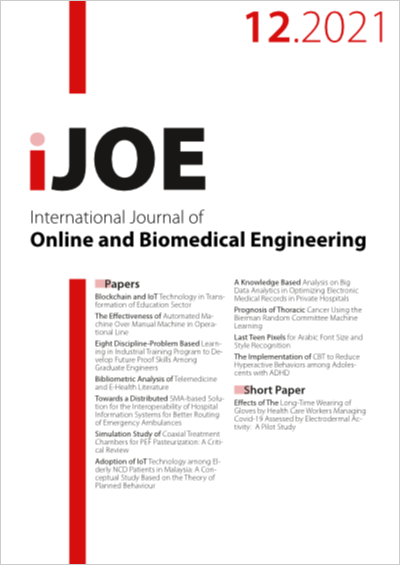Last Teen Pixels for Arabic Font Size and Style Recognition
DOI:
https://doi.org/10.3991/ijoe.v17i12.25065Keywords:
word, sub-word, characters, APTI, last teen pixels, Pixels Continuity (PC)Abstract
Arabic printed script segmentation and recognition techniques change from font to other i.e. each font has particular properties calligraphic and structural which differ with other. Majority of segmentation system suffer in word or sub word segmentation into characters because they consider one algorithm to segment all kind of Arabic printed font, style and size. The goal of this work is to prepare a system of word or sub word Optical Font Arabic Recognition (OFAR) for different font size and style of Arabic printed script, in order to integrate it in global Arabic Optical Character Recognition (AOCR) to choose preferred and good segmentation algorithm. APTI database was used to extract last ten pixels for each word or sub word to build new database of last 10 pixels for each word; OFAR is based upon this new database and our extraction approach called Pixels Continuity (PC) algorithm in different matrix direction and some histogram statistics to extract 20 features. Three KNN classifiers with K=5 and three different distances using Cityblock, Euclidean and Correlation based upon majority-vote are used to evaluate the system robustness. This classifier is compared in the first time with Back propagation Neural Network and Steerable Pyramid (SP) algorithm to re cognize three font families, then in the second time with Gaussian Mixture Models (GMMs) to recognize font and size. The average recognition results obtained was 99.55% about font and size and 98.17% for font, size and style recognition.
Downloads
Published
2021-11-29
How to Cite
Ait Ider, A., Nouri, S., & Maarir, A. (2021). Last Teen Pixels for Arabic Font Size and Style Recognition. International Journal of Online and Biomedical Engineering (iJOE), 17(12), pp. 151–164. https://doi.org/10.3991/ijoe.v17i12.25065
Issue
Section
Papers
License
Copyright (c) 2021 Abdelouahed Ait Ider, Said Nouri, MAARIR Abdelkrim

This work is licensed under a Creative Commons Attribution 4.0 International License.


